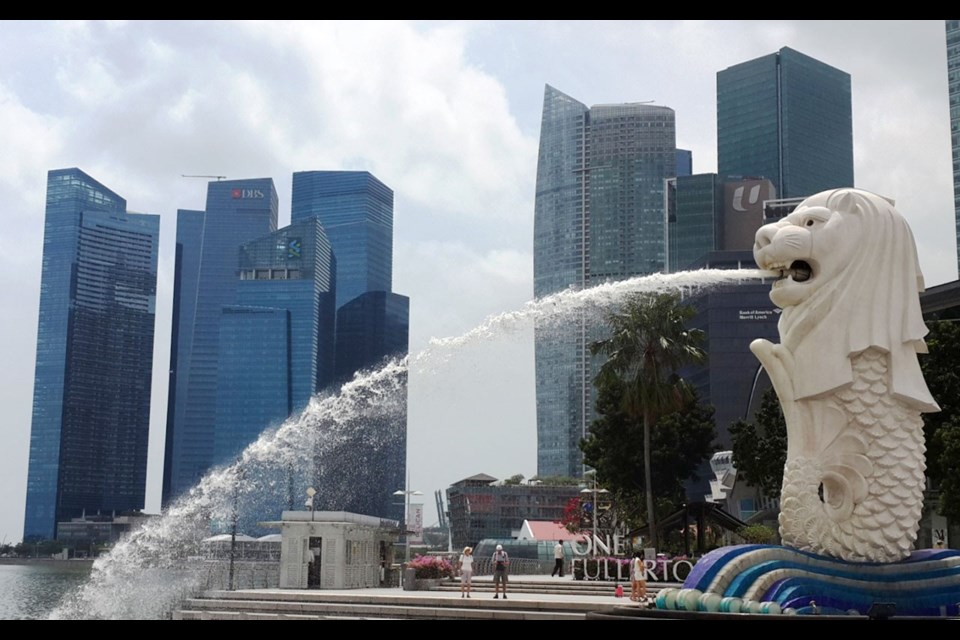It has never been cheaper to fly to Singapore and the city-state has never been more attractive for visitors. New sight-seeing attractions, some amazing new hotels, and world-class restaurants have added new appeal to this long-popular destination.
One of the reasons visitors find Singapore a great place to visit is the blend of cultures that is found there. The largest percentage of the population is Chinese and they believe in hard work, respect for authority, and love of family. The thriving economy, a ruling party that hasn't been beaten since independence in 1965, and regular family get-togethers are evidence of this.
The large populations of Malays and Indians also have considerable influence on the country's lifestyle while British, other Europeans, and Eurasians add further to the mix.
For visitors, the tourist palette is vast. Shopping and eating are local favourite activities and many visitors come to do just that. Singapore was once one of the world's bargain shopping destinations, but those days are gone. Now the appeal is in the huge range on offer, from the latest world fashion to local and Chinese handicrafts and souvenirs.
Street food was a huge attraction but since all the vendors have been moved into hawker centres, some of the atmosphere has been lost. This make locals concentrate on food flavours and visitors can experience Chinese, Malay, Indian, Peranakan, Indonesian, Thai, and Western cuisine in fine restaurants or from small stalls.
While it was once considered a cultural desert, Singapore has responded by creating world-class museums, attractions and casinos. The Asian Civilisations Museum, Singapore Zoo and Night Safari, the new National Gallery of Singapore, and the Marina Sands complex should not be missed. Hidden gems like CHIJMES, the Lau Pa Sat Pavilion, and the Thian Hock Keng Temple provide unexpected pleasures in what could be a concrete jungle to some people.
While Singapore continues to reach skywards and spreads outwards, places such as the glorious Botanic Gardens, modern Gardens by the Bay, the Bukit Timah Nature Reserve, and the Sungei Buloh Wetland provide areas for relaxation and quiet contemplation.
Sentosa Island is something different. It has become a weekend getaway spot for the locals and a fun place for everyone. Big improvements have seen the establishment of the huge integrated Resorts World Singapore, Universal Studios Singapore, and people-friendly transport around the island. It is easy to spend a day here and eight hotels provide accommodation for those wanting to stay longer.
It is not just specific attractions that have appeal, however. Different areas of the city offer completely different sights, sounds and smells. The colonial core has history, architecture and stability while the River area has restaurants, nightclubs, and its own history.
Marina Bay is all new and modern with high-rise towers, futuristic museums and theatres, and the world's second largest Ferris wheel, while Little India, Chinatown, and Kampong Glam showcase ethnic cultures in authentic districts.
Singapore's multi-culture allows various religions to practice their faith in peace. Visitors can visit Chinese and Hindu temples, Western churches, and Muslim mosques to see the daily activities held there.
Many of these are in the central areas and even those that are outside this area can be reached by the excellent metro rail system (MRT) or the extensive bus network. Both are easy to use once you understand the ticketing arrangements. This is where stored-value fare cards or a Singapore Tourist Pass can be useful.
Singapore currently has around 50,000 visitor rooms in a multitude of hotels and other accommodation. Some of the top hotels are amongst the best in the world while there is a good choice of 3- and 4-star places, some of which are extremely funky properties in recycled old buildings.
The area you chose to stay in depends somewhat on what you plan to do but provided the accommodation is near a MRT station it is not particularly critical.
Raffles Hotel is a Singapore institution normally not to be missed, however, it is currently closed for major renovations. This is where the famous Singapore Sling drink was invented in 1915. You can get one of these elsewhere in town but you miss the great ambiance of the original setting.
Singapore costs vary considerably. Food in the hawker centres and food halls is cheap, and transport is very reasonable but hotels, drinking, and nightlife are expensive.
Allow at least four or five days to get the feel of the place but it is quite easy to stay longer.
Len is the author of Experience Singapore, available at www.amazon.com/dp/B078H3WTF2.




